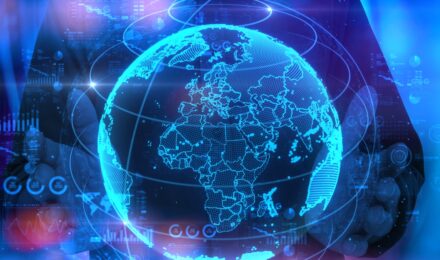A Constantly Evolving Global Landscape
The global economy is in constant flux. In the coming decades, many nations—especially emerging ones—are expected to play an increasingly significant role in global markets. Meanwhile, artificial intelligence (AI) is poised to transform industries and reshape the way people live and work. Overall, steady economic growth is anticipated, with the technology and healthcare sectors expected to benefit most from these advancements.
Economic Changes in Recent Decades
Over the past several decades, developing nations have gained substantial economic influence. In contrast, most developed countries have experienced slower growth, largely due to the relocation of manufacturing industries to developing economies such as China and India.
This long-term shift, known as outsourcing, has significantly reduced manufacturing employment in countries like the United States and those in Western Europe.
The Role of Technology in Shaping the Future Economy
Remote work has become increasingly common worldwide, particularly in the United States. Technological progress continues to disrupt traditional employment, with automation and AI replacing certain human roles.
However, these same technologies are also creating new opportunities—especially in software development, data science, and related tech fields. The result is a rapidly expanding technology sector that shows no signs of slowing down.
The Lasting Economic Effects of the COVID-19 Pandemic
The COVID-19 pandemic triggered a dramatic shift toward remote work. Many companies that adopted remote models during the pandemic have maintained them, while others now offer hybrid arrangements—allowing employees to split their time between home and the office.
This transformation has permanently changed how many businesses operate and how workers engage with their jobs.
The Current State of the Global Economy
The world economy is projected to slow by roughly 3.3% this year. Emerging markets are expected to experience an even sharper decline of about 4.2%. Factors contributing to this slowdown include labor market disruptions, decreased consumer spending, geopolitical instability, and persistent inflation.
The Current State of the U.S. Economy
Economic growth in the United States has largely stagnated, heightening concerns about a potential recession. Economists currently estimate a roughly 50% chance of a recession within the next two years.
The Expanding Role of Developing Nations
In the coming decades, many of today’s poorest countries—particularly in Africa—are expected to begin significant economic development. As this occurs, global economic influence will continue to shift away from traditional powerhouses toward emerging economies.
The Rise of Post-Industrial Economies
Several developing nations are on the path to becoming post-industrial societies. China has already begun this transition, while India is rapidly advancing and may follow suit in the near future.
As these nations move away from manufacturing-based economies, production may relocate to less-developed regions, including parts of Southeast Asia and Africa.
Climate Change and Its Economic Consequences
Climate change will increasingly influence global economic patterns. Desertification is expected to reduce agricultural productivity in areas bordering the world’s deserts, while regions like California, the southern Great Plains, and the edges of the Sahara may face more frequent droughts.
To maintain agricultural output, affected areas will need to adopt large-scale irrigation and water management systems.
Inflation Trends
Inflation is gradually easing and is projected to stabilize at around 2% annually by 2027. However, unexpected global events or policy shifts could cause temporary increases in the future.
The Continuing Revolution of Artificial Intelligence
Roughly 86% of business leaders believe AI will positively impact their operations. While AI will inevitably replace certain job functions, most experts predict it will not cause widespread job loss. Instead, it will redefine work by rewarding those who adapt and integrate AI into their workflows.
Changing World Demographics
Population growth in Africa and India will remain strong. India is expected to become the world’s most populous nation by 2050. At the same time, aging populations will reshape the demographics of developed countries—by mid-century, about 25.5% of people in advanced economies will be over 65, and half the global population will be older than 36.
These shifts will significantly increase demand for healthcare services and professionals.
Projected Global Growth
The world economy is expected to double in size by 2050, driven primarily by expanding economies in the developing world. Continued innovation and investment in technology and healthcare will also fuel growth in developed nations.
The Second Half of the 21st Century: Looking Further Ahead
Forecasts beyond 2050 become increasingly uncertain. Demographic expansion in Africa and Asia is expected to slow, stabilizing global population growth. While these regions will remain the most populous, their growth-driven economic momentum will taper off.
Climate change will likely become the dominant force shaping economic activity, spurring innovation in sustainability and environmental technologies. The healthcare sector will continue to grow due to the aging global population.
Additionally, space exploration and resource extraction could open entirely new economic frontiers. Space-based industries—such as manufacturing or mining—might revolutionize the global economy in ways that are still difficult to imagine today.



